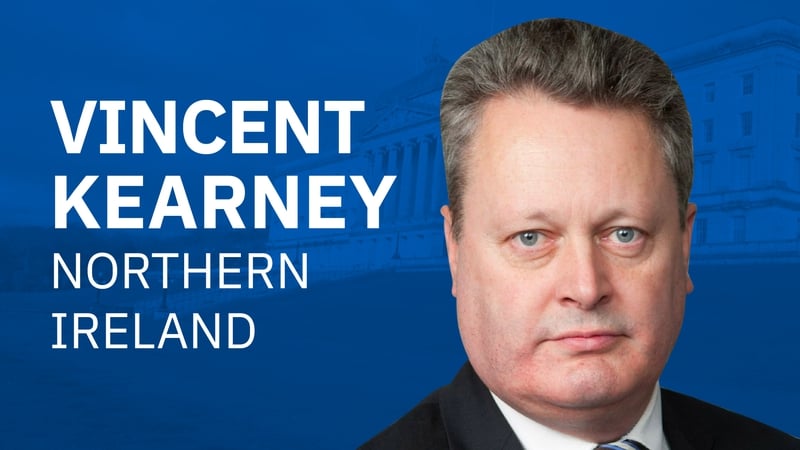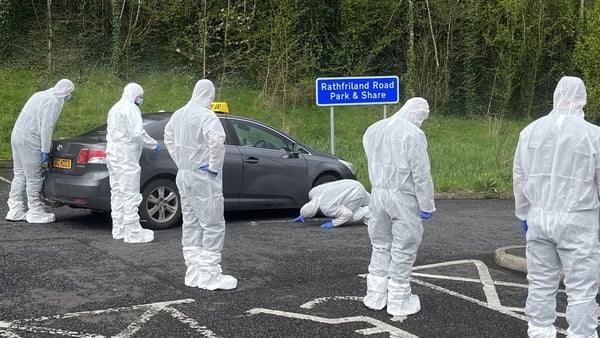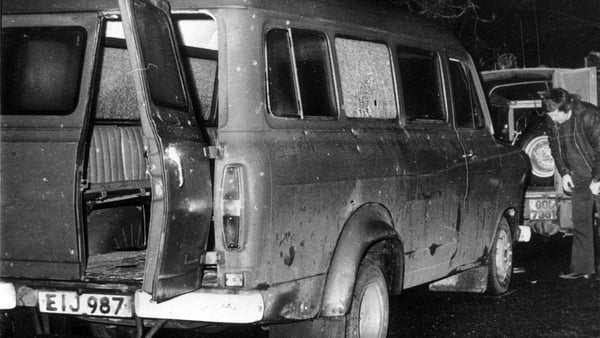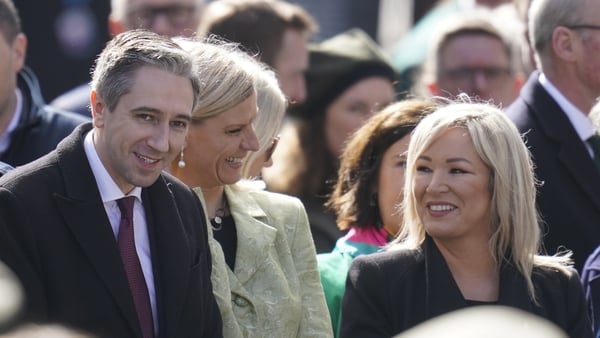A metal gate at Lanark way in west Belfast was last week the focus of the worst violence witnessed in Belfast for years.
The so-called peace wall that separates the loyalist Shankill Road and nationalist Springfield Road is just over 17 metres wide and three metres high.
But the political gulf between the communities on either side is huge, and widening.
There's been much talk in recent days about the need to remove, or retain, an invisible Irish Sea customs border created by the Northern Ireland Protocol.
But no mention of the many visible borders like the one at Lanark Way, which meander through parts of Belfast, Derry, Lurgan and Portadown.

Yesterday marked the 23rd anniversary of the signing of the Good Friday Agreement, designed to transform Northern Ireland society, as well as bringing violent conflict to an end.
But there are more than 70 of these structures. Some are walls, while others are fences, gates, or a combination of materials. Whatever the form of construction, the aim is the same: to separate and protect.
They are built along sectarian interfaces, where Catholic and Protestant, unionist and nationalist, loyalist and republican communities live in close proximity. These are the areas that witnessed the worst of the Troubles.
For many Protestant and loyalist communities in Belfast, they are viewed like Derry’s much older defensive walls, as a bulwark against an invading green tide.
The city has a growing Catholic population, while the Protestant population is declining. Catholic west Belfast is densely populated with a growing younger population, while on the Protestant side of the walls the population density is lower and the age profile older.
The growing debates around the Northern Ireland Protocol and a possible border poll have added to loyalist concerns and insecurity.
Young children hurling petrol bombs and anything else they could get their hands on at police officers last week don’t know much about the protocol. Their parents and other adults in the areas may have genuine concerns about the practical impact of the sea border and the obstacles it has created to trade, but for loyalists this is about politics, not products.
"My loyalism is not about my wallet," Shankill Road man Moore Holmes told RTÉ Prime Time on Thursday. "My loyalism is in my blood."
Then add to the mix the controversy over the decision not to prosecute Sinn Féin vice president and Stormont Deputy First Minister Michelle O'Neill, and 23 other elected representatives, with breaches of Covid restrictions during the funeral of senior republican Bobby Storey last summer.
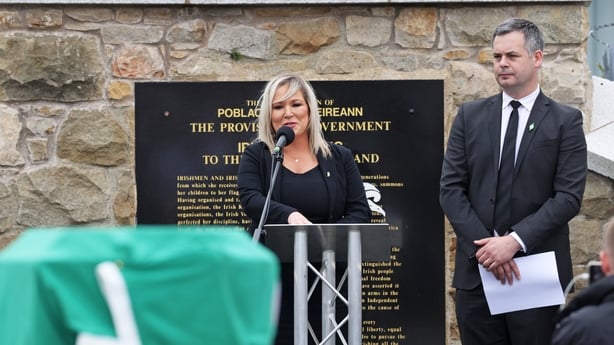
Despite the fact that the PSNI recommended prosecutions of all 24, First Minister and DUP leader Arlene Foster, and other unionist leaders, lambasted the leadership and demanded that Chief Constable Simon Byrne resign.
The decision was seized upon by loyalists who claim the nationalist and republican community, the green tide, is on the rise; that "the other side" is in the ascendancy, with even the police now against them.
The reality is that, away from the arguments about the protocol, policing and politics, there is more that unites the two working class communities on either side of the gate than divides them.
Suzanne Breen, Political Editor of the Belfast Telegraph, put it well on RTÉ Drivetime last week.
"This week in Belfast we had two sets of youths stoning each other, throwing petrol bombs at each other with hatred in their hearts when really they are mirror images of each other," she said.
"They stood there on the peace line in west Belfast, almost identical in their dress, in their background, and in their economic prospects, but yet they saw each other as the enemy and that’s the very sad reality for Northern Ireland as we come to mark the 23rd anniversary of the Good Friday Agreement."
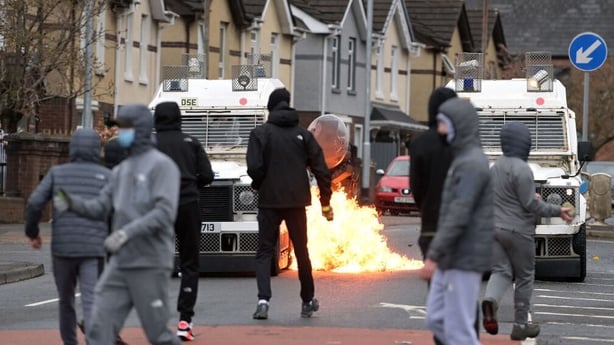
Many of the adults who watched the rioting throughout the past week actively encouraged the young people involved. They could be heard egging them on. Many of those adults were members of loyalist paramilitary organisations.
Despite a statement by the Loyalist Communities Council, an umbrella group representing the UVF, UDA and Red Hand Commando, that the organisations were not involved "directly or indirectly", many of their members clearly were.
In a nutshell, their narrative, the message that fueled anger and discontent, is simple. For loyalists, the protocol is going to sever Northern Ireland from the rest of the United Kingdom; it is going to make them less British; it is going to lead to an economic, and eventually, a political and constitutional united Ireland.
Jonny Byrne is a senior lecturer in criminality at Ulster University, who is a recognised expert on the subject of peace walls. He wasn’t surprised that violence, which began within loyalist communities, expanded to the interface areas. In times of heightened political tension and turmoil, those areas have traditionally become the battleground.
"The walls now, instead of protecting the community physically, they protect the community’s sense of identity, they protect the sense of culture and the sense of tradition, and they protect the communities themselves," he explains.
"All the research that we have done from 2012 onwards has said that people are afraid that if a wall comes down, their community will disappear on the unionist side, and there is no evidence to suggest that they are wrong."
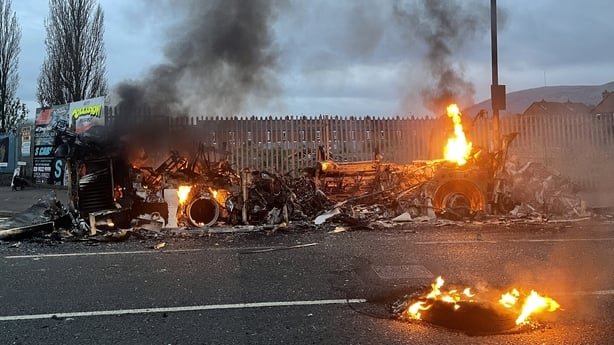
Jonny believes the walls have helped create an environment where violence has been normalised because behind them there are murals and memorials to those who died defending the area, or who were killed by "the other side".
"You could argue that, particularly in those areas that were disproportionately affected by the conflict, particularly those areas where there are peace walls that divide communities, that there is an acceptance of violence to an extent that it has been normalised," he says.
"That, alongside the last 13 months where young people have been living under curfew, aligned with Brexit and the protocol, aligned with the unionist narrative that they are losing their identity and their culture, and that is all aligned with the changing demographics.
"Then you add the talk of a border poll, which is seen as a threat to the very existence of Northern Ireland. All these factors come together, people start to feel there is a danger, their areas are going to be overrun, and then we see the violence in recent days."
There is a strategy to remove the walls. Back in May 2013, the then Stormont first minister Peter Robinson and deputy first minister Martin McGuinness unveiled "shared future plans".
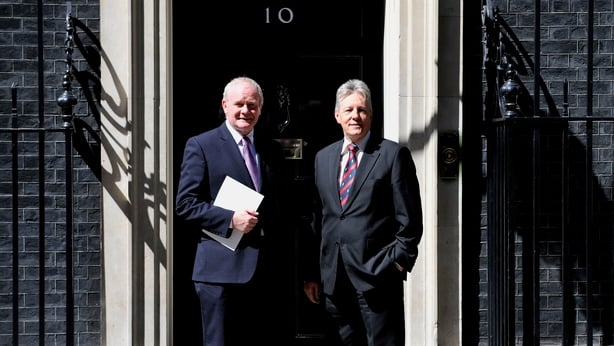
They included a target to bring down all of Northern Ireland’s peace walls by 2023. Yes, that’s right, in two years' time.
It was part of the "Together Building a United Community (T:BUC) strategy. It was described as a manifestation of the Stormont Executive’s "commitment to improving community relations and continuing the journey towards a more united and shared society".
A month later, the keynote speaker at a conference at Belfast’s Waterfront Hall told the audience that removing the walls "more than anything, will shape what Northern Ireland looks like 15 years from now and beyond".
The speaker was former US president Barack Obama. More than half that stipulated timescale has passed and the likelihood of the walls being removed is more remote now than when it was when he spoke.
The current political debate is and will remain focused on the protocol and the invisible border running down the Irish Sea. That customs border is the result of years of negotiations involving the British government and 27 member EU states, and their teams of lawyers.
There are currently no signs that the UK government is going to revoke the protocol, so years of ongoing discussions about tweaks, amendments, compromises and nuances could lie ahead.
The likelihood is that, however long it takes to resolve, the borders of masonry and steel will still be standing.
